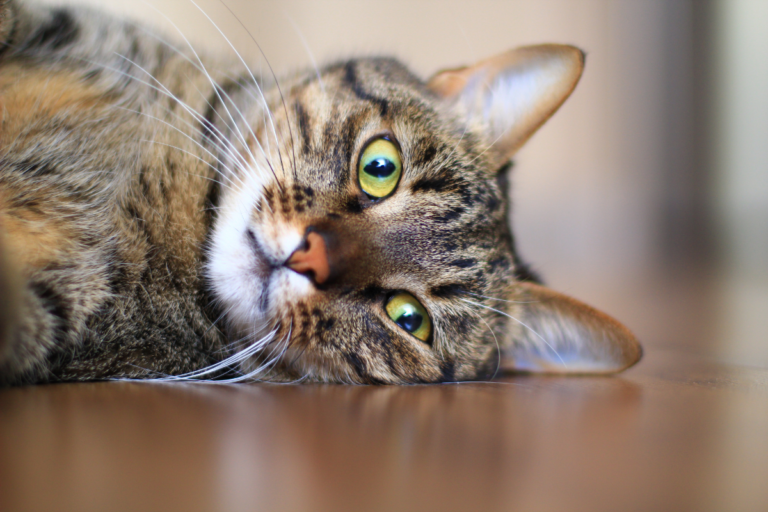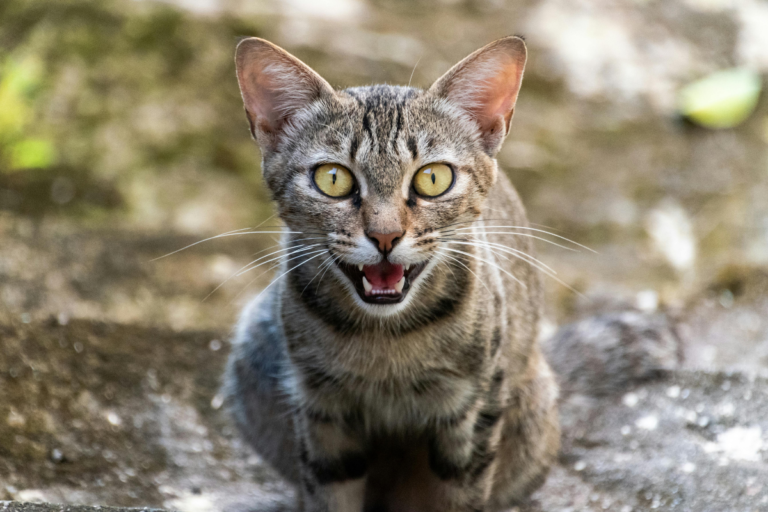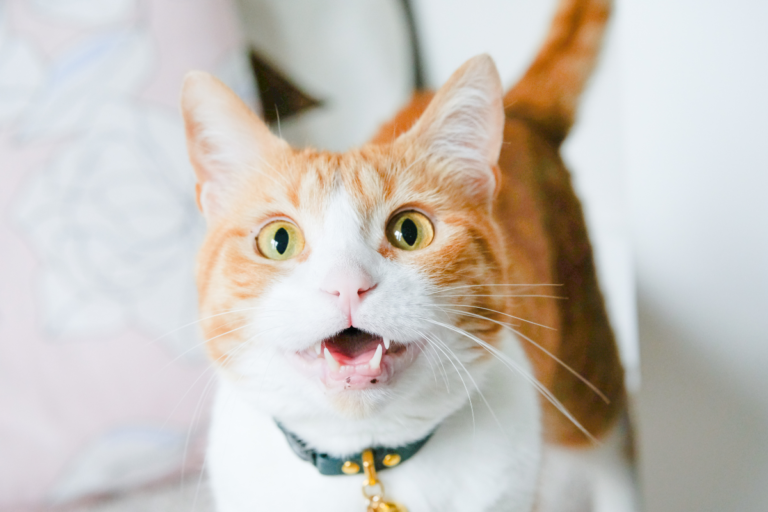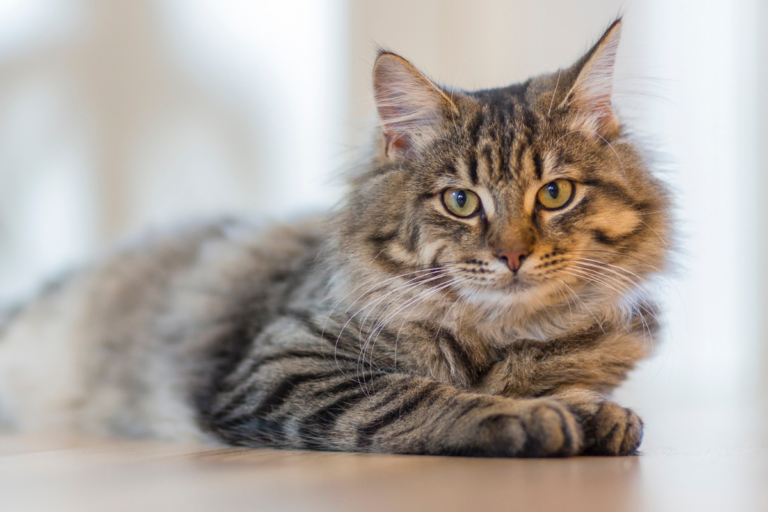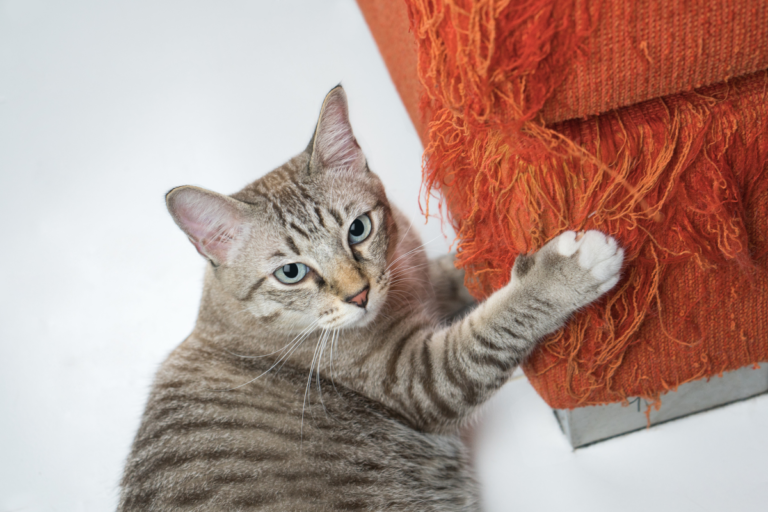Conquer Meowing Mania: Tips to Address Excessive Meowing in Kittens
Understanding Cat Meowing
Alright, let’s talk about our furry friends and their peculiar way of chatting with us – meowing! Cats are chatterboxes, and meowing is their way of telling us what’s on their minds.
What’s the Big Deal about Cat Meowing?
Think of meowing as your cat’s version of sending you a text message. But instead of emojis, they’ve got their meows. Domesticated cats have turned meowing into a language just for us – their human companions. Wild cats, on the other hand, keep their meows to themselves, mainly because they don’t need to nag humans for dinner.
From a soft, gentle “hey there!” to a full-blown “feed me, human!” cats have different meows to signal what they want. The tone and volume might change based on their mood or how badly they need something. A gentle chirp can mean a friendly hello, while an ongoing, demanding meow might mean someone’s got empty food bowls or an itch to explore the great outdoors. Listen closely, and you’ll get what your whiskered comrade is saying.
Why All The Meowing?
Cats open their mouths for all sorts of reasons, and knowing why can help you keep your kitty happy. Here’s the lowdown:
-
Hey, Look at Me!: Ever notice your cat decides to engage the vocal cords just as you’ve settled down? That’s because sometimes they just want you, your attention, a cuddle, or maybe a game.
-
Feed Me Please!: Meowing when they’re hungry or thirsty is as natural as breathing. If it’s chow time or their water’s running low, expect a serenade.
-
Ouch or Uh-oh: If they won’t stop meowing, it might be their way of saying “something’s not right.” Health problems need a vet’s eyes, so don’t ignore a non-stop racket.
-
I’m a Chatty Breed: Some cats, like Siamese, are known for their love of the spotlight – and their meowing. Others, like the Persians, might just nod and purr instead.
-
What’s Happening Here?: New digs, new pets, or strange noises? Cats might have a bit more to say when things change around them.
Find out what’s behind all the meowing, and you can work to hush an overly chatty cat. Night chatter? We’ve got that covered in our cat meowing at night tips.
What’s Next? A Cheat Sheet for Cat Chatter
| Reason | What You Can Do |
|---|---|
| Hey, Look at Me! | Set aside some playtime so they’re not pining for your presence |
| Feed Me Please! | Keep a regular meal routine and make sure they’ve got fresh water |
| Ouch or Uh-oh | Visit a vet to check everyone’s okay |
| Chatty Breed | Learn to love your cat’s chatter; try to engage them at specific times |
| What’s Happening Here? | Keep things calm and comfy, so they feel at home |
So, by tuning into your cat’s meows and figuring out what’s up, you’re on the path to a quieter house and a happy, purring sidekick. For more tips on calming consistent meowing, head over to our advice on constant meowing.
Training Techniques for Curbing Excessive Meowing
Got a chatty kitten on your hands? You’re not alone. Many cat owners find themselves dealing with constant meowing, but fear not! There’s hope (and a few tricks) for turning that noise down. Let’s dive into some popular methods to help your furry little noise machine tone it down a notch and find their inner Zen.
Reward those Good Vibes
Ever notice how a treat can make your furry pal all purrs? Positive reinforcement uses that same effect to train your kitty like a charm. Forget about scolding or giving stink-eye. Instead, when your kitten takes a chill approach and isn’t mimicking a cat siren, break out the treats or give them some extra love. It’s like teaching them that their inner peace leads to yummy outcomes. More on rewarding adorable fluffballs can be found in our guide on cats behavior.
Distract, Divert, and Conquer
Sometimes, your tiny friend just needs a job to do. This is where redirecting their attention comes in. They might be meowing because they’re bored or craving attention, so mix things up:
- Get them hooked on interactive toys.
- Let them go wild on a scratching post (scratching).
- Make meals a brain game with puzzle feeders.
Providing a fun ride for their senses can cut back on the meowing and make you their favorite person of the week.
Say It Nicely, Please
Polite communication is the name of the game here. If your kitten acts like a squeaky wheel when demanding food, try ignoring the meows—even if only for a second. Once they hit a pause or offer a single, more refined meow, that’s when the kibble or cuddle comes in. It’s kind of like saying, “You get more with a whisper than a scream,” only with treats Pets Stack Exchange.
To master this technique:
- Play it cool and ignore the racket.
- Patiently wait for brief silence.
- Reward that precious moment of quiet with a pet or a treat.
Before you know it, your extroverted kitten will be a model of polite feline society.
| Training Trick | What It Is | What’s In It For You And Your Cat |
|---|---|---|
| Positive Reinforcement | Reward those chill vibes and proper meows with goodies and cuddles | Encourages calm behavior and cuts down on stress |
| Redirecting Attention | Get their paws moving and minds working with toys and activities | Decreases boredom-fueled meows and keeps them entertained |
| Polite Communication | Saying “not now” to non-stop meows and rewarding the quieter moments | Teaches your cat when it’s okay to speak up for treats |
Tailor these methods to your kitty’s quirks, and you’ll have a quieter, happier home in no time. Need tips to tackle late-night meowing? Check out our guide on dealing with cat meowing at night.
Addressing Health and Environmental Factors
Taking care of what makes your kitten meow non-stop is super important for their happiness and comfort. Let’s figure out what’s bothering them – it could be health stuff, needing more fun in their life, or even just their breed’s natural chatter.
Detecting Underlying Health Issues
If your kitten’s meowing is getting outta hand, it might be more than just a chatty mood. Things like pain, dementia for the older felines, feeling lonely, or problems with their thyroid, heart, or kidneys could be making them vocal. Notice if your little furball suddenly turns into a loudmouth. That’s your cue to get them to the vet and see if something serious is up. It’s even more crucial if this meowing spree is new since it might point to some issue needing a doc’s touch.
| Health Problem | Symptoms | What to Do |
|---|---|---|
| Pain | Acting differently, touchy | Call the vet |
| Feline dementia | Confused, loud meowing | Call the vet |
| Separation anxiety | Fussy solo act, meows a lot | Call the vet |
| Thyroid, heart, kidney issues | More meowing, sluggish | Call the vet |
Environmental Enrichment
Giving your kitten a fun playground at home is a great way to hush the meowy fits. They’re like tiny adventure-seekers craving both mental and physical thrills. Here’s how to make your place a kitten Disneyland:
- Toys With a Twist: Grab a few toys that make them want to chase and pounce like wild cats.
- Climb Every Mountain: Set up cat trees or shelves for your kitten to become a mountaineer.
- Scratch That Itch: Scattering scratching posts around is a must to keep their claws (and your couch) happy.
- Window TV: Park them near a window where they can watch birds and cars go by.
| Fun Stuff | What’s It About? |
|---|---|
| Interactive Toys | Jiggle and pounce! |
| Climbing Structures | Mountain climbing at home |
| Scratching Posts | Claw out the energy |
| Window Perches | Nature channel, live |
Got a scratchy little friend? Check out hacking the scratch habit in our scratching guide.
Effects of Breed on Meowing
Every cat’s vocals are unique—some breeds are just born chatterboxes while others are strong, silent types. Take Persians and the blue Chartreux, they’re more on the whisper side. Siamese cats, though, those guys will chat your ear off! Knowing where your kitten stands on the purr-to-meow spectrum helps you keep your sanity and adjust how you handle the chit-chat.
| Cat Breed | How Much They Gab |
|---|---|
| Persian | Quiet bunch |
| Chartreux | Also pretty quiet |
| Siamese | Talks a lot! |
| Bengal | Somewhat vocal |
Knowing your kitty’s breed lets you handle their chattiness like a pro. Peek into breed habits over on our articles about orange cats and tabby cats.
With this lowdown on health and lifestyle, you’re now ready to help curb your kitten’s excessive meowing. Keeping your cool and making proactive changes might turn your home into a quieter paradise for both you and your furry friend.
Managing Nocturnal Meowing
Talking about the mystery of those nighttime meows, it’s a puzzle many cat parents face with their lively kitties going into opera mode when all you want is some shut-eye.
Normal Nocturnal Behavior
Cats are the night owls of the pet world. They’re hardwired to party from twilight till dawn. Cats snooze about 16 hours a day, catching catnaps any time they please. So, if your furry friend is up and at ’em when the stars are out, it’s just them living their best life.
Each kitty’s got their own way of conversing. The sociable Siamese might chat your ear off, while a Persian might enjoy the quiet life. Knowing your cat’s chatter patterns can help gauge what to expect from your feline night owl.
Strategies for Nighttime Meowing
Facing your cat’s midnight madness demands some smarts, patience—and a sprinkle of clever tactics. Let’s dive into some tricks that could just save your sleep.
Create a Predictable Routine
Cats dig consistency like nobody’s business. Get your kitty into a groove with regular meal times, play sessions, and sleepy-time. Tire them out with some interactive play right before bedtime to give you both a solid night’s sleep.
Use Environmental Enrichment
Keep the little troublemaker busy with puzzle toys and scratching posts to turn their boredom-driven meows into dreamy sighs. A playground of climbing trees and even a secured outdoor spot can work wonders for your kitty’s mind and body.
Implement a Calm Sleep Environment
Set the stage for your kitty’s snoozing spot—cozy bed, dim lights, away from all the buzzing life. A bit of white noise might also lull them into peaceful dreams, keeping random noises from disrupting their Z’s.
Avoid Reinforcing Meowing
In the battle of wills over the nighttime meows, don’t raise the white flag. Responding to the meows with cuddles or snacks teaches kitty that noise equals treat time. Stay composed and only give attention when your purring pal is quiet.
Consider the Effects of Breed
Some breeds just love their late-night chatter sessions (The Spruce Pets). If you’ve got a talkative one, stock up on ways to keep them entertained and tuckered out. Curious about your tabby or orange cat’s quirks? We’ve got insights waiting for you.
Using these tricks can help dampen the meows and gift you and your rug-tiger with a better night’s rest. For more tidbits on solving other kitty conundrums, see what we have about loud meowing and decoding cat brains.
Tips for Training and Socialization
Raising well-behaved kittens isn’t just about keeping sanity in check—it’s about making life better for you and your furball. Teaching them little tricks and getting them comfy with a carrier are total game-changers.
Basic Tricks Training
Who knew you could teach kittens a thing or two? Showing them simple tricks is a fun bonding time. Plus, it smooths any ruffled fur (literally and figuratively). Here’s a quick hit list on training some cool moves:
-
Sit
- Waggle a treat right over your kitten’s nose.
- Slowly move it up and towards you.
- As their little head follows, their bottom will plop down.
- Once they’re chillin’, say “sit” and reward them with the treat.
-
Spin
- Hold a treat close enough for kitty sniffs.
- Move that treat in a big circle around ‘em.
- Cheer them on as they do the twirl.
- When they complete the spin, utter “spin” and toss them the treat.
-
High-Five
- Hold a treat at kitty-eye level.
- Give one paw a gentle boop.
- When they raise it, say “high-five” and give them their snack.
These training sessions aren’t just fun; they can make your feline feel chill and happy. Less stress equals more snuggles and can even boost their immune system (who knew?).
Carrier Training for Vet Visits
Making the pet taxi not so terrifying is key for smooth trips to the doc. Turn that carrier into a kitty paradise with a few simple hacks:
-
Make It Cozy
- Line it with soft, snuggly stuff.
- Keep the door open to let them get curious.
-
Treats and Toys
- Pop some favorite goodies inside.
- Start with treats near the door, and then inch them further back.
-
Short, Friendly Sessions
- Begin with quick stints—let them hang out inside for a few minutes.
- Stretch the sessions as comfort grows.
- Celebrate every brave entrance with a treat.
Your kitty will be way cooler under pressure and more agreeable at the vet with this easy-peasy plan. It’s all about mixing the positive vibes with those tricky moments.
Hungry for more tips on taming your kitty’s quirks? Sneak a peek at other articles on cats behavior, cat head butting, and cat yowling.
Dealing with Excessive Meowing
Handling Constant Meowing
Owning a cat can be a joy, but when your little furball won’t stop yapping, it’s like hosting a karaoke night that lasts forever. Figuring out why your kitty insists on being so vocal is your first port of call. Often, cats will meow excessively to indicate something’s not quite right in their world. It might be due to underlying health troubles like pain, age-related dementia in senior cats, separation anxiety, or issues with the thyroid, heart, or kidneys. If your cat’s meowing is a new tune, it’s smart to visit the vet to rule out health concerns. We don’t want to miss a tickle in the throat if it’s something serious (The Spruce Pets).
Once you’ve gotten the all-clear from the doc, it’s time to play behavior detective. One trick is using positive reinforcement. It’s a fancy way of saying, “Give Fluffy a treat for being a goodie, not a chatterbox.” Reward those sweet, soft meows and ignore the endless ones. It’s like teaching a kid that throwing a fit doesn’t mean candy time. You can learn more about shaping kitty behaviors in our cats behavior section.
Ignoring Meow Demands
Experts suggest turning a deaf ear to demanding meows helps. It’s a bit like teaching your cat that their whining isn’t a VIP ticket to what they crave (The Spruce Pets). This could mean investing in some earplugs, closing doors, or giving them some timeout elsewhere until they cool off.
Consistency is your BFF here. Don’t cave in once they turn those big eyes on you. My tip is to ignore pesky meows and roll out the red carpet (with treats) for calm and collected communication. This method banks on associative learning, where the cat realizes, “Oh, being chill gets me goodies!” (British Psychological Society). Dive into more training tricks in our cat psychology article.
Handling Constant Meowing
Living with a little yapper can drive anyone up the wall. Here’s the good news: there are tricks to hush the chatter.
| Game Plan | What’s Involved |
|---|---|
| Cold Shoulder | Tune out the rampant meows to avoid egging them on (The Spruce Pets). |
| Treat Time | When your kitty’s behaving nicely, toss them a bone… I mean, a treat (British Psychological Society). |
| Check-Up with The Vet | Rule out sneaky health issues that could be making them vocal. |
To ease the noise and dodge other kitty conundrums, scan through our articles on cat meowing loud and cat always meowing.
Through these techniques, you can help teach your tiny tiger that being a broken record won’t get them what they want. Instead, rewards for their composure will pave the way to a more zen-like atmosphere, making life cuddlier for both you and your furry rockstar.

